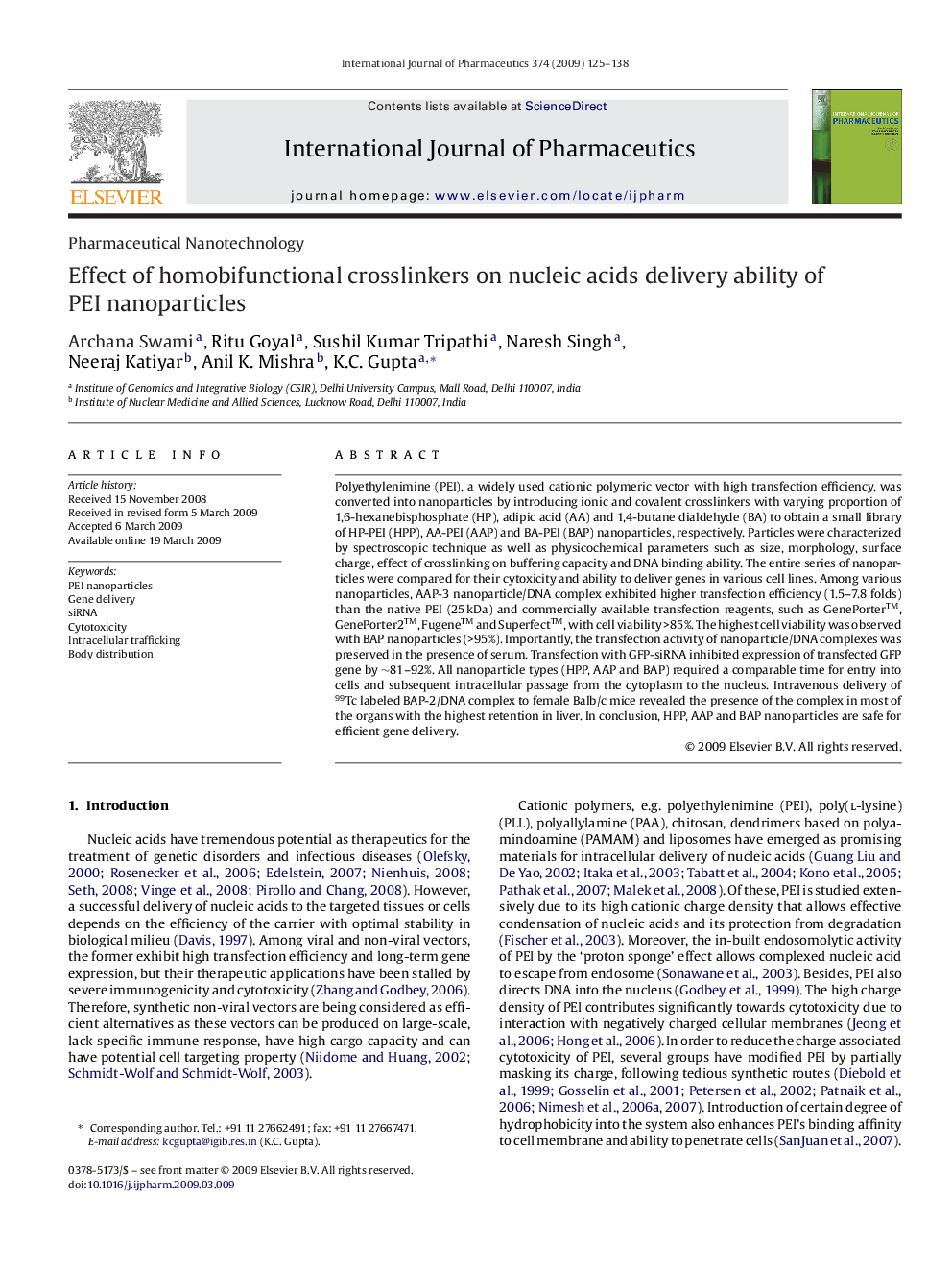| Article ID | Journal | Published Year | Pages | File Type |
|---|---|---|---|---|
| 2504828 | International Journal of Pharmaceutics | 2009 | 14 Pages |
Polyethylenimine (PEI), a widely used cationic polymeric vector with high transfection efficiency, was converted into nanoparticles by introducing ionic and covalent crosslinkers with varying proportion of 1,6-hexanebisphosphate (HP), adipic acid (AA) and 1,4-butane dialdehyde (BA) to obtain a small library of HP-PEI (HPP), AA-PEI (AAP) and BA-PEI (BAP) nanoparticles, respectively. Particles were characterized by spectroscopic technique as well as physicochemical parameters such as size, morphology, surface charge, effect of crosslinking on buffering capacity and DNA binding ability. The entire series of nanoparticles were compared for their cytoxicity and ability to deliver genes in various cell lines. Among various nanoparticles, AAP-3 nanoparticle/DNA complex exhibited higher transfection efficiency (1.5–7.8 folds) than the native PEI (25 kDa) and commercially available transfection reagents, such as GenePorter™, GenePorter2™, Fugene™ and Superfect™, with cell viability >85%. The highest cell viability was observed with BAP nanoparticles (>95%). Importantly, the transfection activity of nanoparticle/DNA complexes was preserved in the presence of serum. Transfection with GFP-siRNA inhibited expression of transfected GFP gene by ∼81–92%. All nanoparticle types (HPP, AAP and BAP) required a comparable time for entry into cells and subsequent intracellular passage from the cytoplasm to the nucleus. Intravenous delivery of 99Tc labeled BAP-2/DNA complex to female Balb/c mice revealed the presence of the complex in most of the organs with the highest retention in liver. In conclusion, HPP, AAP and BAP nanoparticles are safe for efficient gene delivery.
